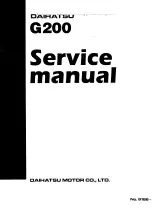
n
Adjusting the Shoulder Anchor
The front seats have adjustable shoulder anchors to accommodate taller
and shorter occupants.
1. Move the anchor up and down
while holding the release button.
2. Position the anchor so that the belt
rests across the center of your
chest and over your shoulder.
Airbags
Your vehicle is equipped with several types of airbags: front airbags, side
airbags, and side curtain airbags.
n
Front Airbags (SRS)
The front SRS airbags inflate in a moderate-to-severe frontal collision to
help protect the head and chest of the driver and/or front passenger. They
are housed in the center of the steering wheel for the driver and in the
dashboard for the front passenger. Both airbags are marked SRS AIRBAG.
SRS (Supplemental Restraint System) indicates that the airbags are
designed to supplement seat belts, not replace them. Seat belts are the
occupant's primary restraint system.
n
Advanced Airbags
The airbags have advanced features to help reduce the likelihood of airbag
related injuries to smaller occupants.
The driver's advanced airbag system includes a seat position sensor. Based
on information from this sensor and the severity of the impact, the advanced
airbag system determines the optimal deployment of the driver's airbag.
SAFETY INFORMATION
8 |
The front passenger's advanced airbag system has weight sensors.
We advise against allowing a child age 12 or under to ride in the front
passenger's seat. However, if you do allow a child age 12 or under to ride in
the front passenger's seat, note that the system will automatically turn off
the front passenger's airbag if the sensors detect that the child is
approximately 65 lbs (29 kg) or less.
For the advanced airbags to work properly:
• Do not spill any liquid on or under the seats.
• Make sure the floor mat behind the front passenger's seat is hooked to
the floor mat anchor. An improperly placed mat can interfere with the
advanced airbag sensors.
• Do not put any object under the passenger's seat.
• Make sure any objects are positioned properly on the floor. Improperly
positioned objects can interfere with the advanced airbag sensors.
• All occupants should sit upright and wear their seat belts properly.
• Do not cover the passenger's side dashboard with a cloth, towel, cover,
etc.
• If there is a problem with the driver’s seat position sensor, the SRS
indicator will come on, and in the event of a crash, the airbag will deploy
(regardless of the driver’s seating position) with a force corresponding to
the severity of the impact.
n
Side Airbags
The side airbags help protect the upper torso and pelvis of the driver or a
front passenger during a moderate-to-severe side impact. They are housed
in the outside edge of the driver's and front passenger's seat-backs. Both
are marked SIDE AIRBAG.
When the sensors detect a moderate-to-severe side impact, the control unit
signals the side airbag on the impact side to immediately inflate.
Do not attach accessories on or near the side airbags. They can interfere
with the proper operation of the airbags or hurt someone if an airbag
inflates.
Do not cover or replace the front seat-back covers without consulting a
dealer. This can prevent your side airbags from properly deploying during a
side impact.
SAFETY INFORMATION
| 9









































